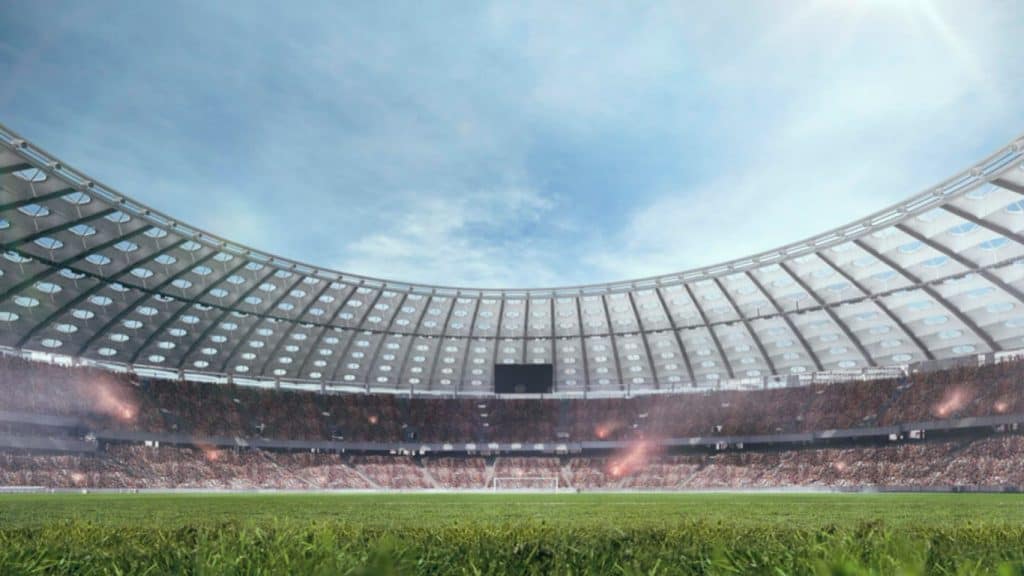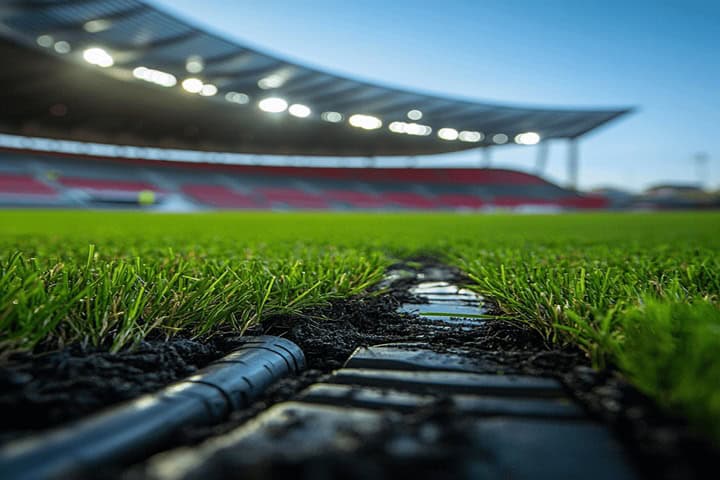
Unlock your sports field’s potential year-round, regardless of frosty forecasts! Discover how advanced undersoil heating technologies and solutions can transform your field’s longevity.
Heating a playing field may seem like a very impractical solution. In actuality, there is more to under soil heating than meets the eye, and can actually help the players to keep warm during the colder seasons. In this article, you will discover how hydronic undersoil heating for sports fields is a great choice. From maintaining the turf conditions to ensuring consistent game schedules, undersoil heating systems can offer practical solutions against even the harshest of weather conditions.
Key Points:
- Ensure year-round usability of sports fields, avoiding weather-related cancellations.
- Improve turf health, regardless of seasonal challenges.
- Reduce operational costs with energy-efficient technology.
- Increase safety for players by preventing icy surfaces.
- Explore eco-friendly heating options that align with modern sustainability standards.
Quick Benefits about Undersoil Heating
- Year-round gameplay made possible
- Decreased injury risk for players
- Minimal ongoing expenses
- Option to utilise renewable energy sources
Why Choose Hydronic Undersoil Heating
Maintaining control over your playing field can often be as crucial as the game itself, especially when it comes to unpredictable British weather. Fortunately, wet underfloor heating systems, which are perfectly suitable for under soil heating solutions, can offer you the control that you need.
By installing this system, you ensure that neither snow nor frost will delay your match schedules. Our underfloor heating systems can work efficiently under both natural grass and artificial turf, maintaining ideal conditions even when temperatures dip below freezing.
This means that when game day arrives, your field is not just playable; it’s perfectly primed for all weather conditions. Prior to purchasing an underfloor heating kit, be sure to contact us today to reassure yourself that our technologies can work efficiently with your playing field.
Is Undersoil Heating New?
Despite common misconception, under soil heating is not a new thing; in fact, it’s a proven solution embraced by many top-tier sports venues.
For instance, Goodison Park was the pioneer in England, installing their system back in 1958. Today, iconic stadiums like Old Trafford and Elland Road feature extensive networks of heating pipes, allowing the stadiums to be uninterrupted by harsh weather. These systems are great for clubs to avoid financial losses from postponed matches, making them a standard in many premier leagues.
What are the most common types of stadiums? Find out now.
Why Opt for Undersoil Heating?

The main reason that you should integrate undersoil heating into your sports or playing field is to counteract adverse weather conditions that can render a field unusable. The technology involves laying a network of durable metal pipes beneath the field’s surface, connected to a central heating unit such as ground source heat pumps. The circulated warm water or air ensures the ground remains thawed, preventing ice and snow accumulation.
Increasingly, sports facilities are looking to reduce their environmental footprint. By integrating undersoil heating systems with renewable energy sources, facilities can decrease their dependence on fossil fuels and increase their use of green technologies. This not only aids in reducing operational costs but also helps sports organisations with global sustainability goals, improving their public image and community standing.
With undersoil underfloor heating, field managers can precisely manage the soil temperature, ensuring the best conditions at all times, preventing delays or cancelled games.
Top 7 Advantages of Investing in Hydronic Undersoil Heating
By embracing this unique technology, sports facilities can ensure peak performance and safety for athletes, field conditions, and sustainable operations, aligning with both financial goals and environmental responsibilities.
Here is why we recommend reliable undersoil heating solutions:
1. Uninterrupted Use of Sports Fields
With undersoil heating, sports organisations can significantly reduce the chances of game cancellations or delays due to adverse weather conditions. This consistent availability translates to higher revenue through continuous field use, making it a wise financial decision for long-term operations.
2. Turf Maintenance

Maintaining the health of your turf, whether natural or artificial, is effortless with undersoil heating. By regulating the ground temperature, this system prevents frost and allows for moisture control, ensuring that grass grows healthily throughout the year. This results in a longer playing season and less wear and tear on the field.
3. Reduced Operating Costs
Hydronic underfloor heating systems are known for their energy efficiency. They require minimal energy to prevent snow and ice building up, thereby keeping operational costs low. This efficiency makes undersoil heating an economically smart choice for large and small fields alike.
4. Improved Safety for Athletes

The safety of your players should always be considered first. By keeping the playing surface dry and free from ice, undersoil heating minimises the risk of injuries related to slipping and falling. This not only protects athletes but also maintains a high standard of play regardless of weather conditions.
5. Environmental Responsibility
In an era where environmental impact is a major consideration, hydronic undersoil heating systems can be integrated with renewable energy sources like solar panels, geothermal heat pumps, and high-efficiency boilers. This partnership significantly reduces the carbon footprint associated with maintaining sports fields.
6. Custom Solutions for Unique Field Requirements
Every sports field has its own set of challenges and requirements. Custom-designed hydronic undersoil heating systems take these factors into account, providing a bespoke heating solution that fits the exact dimensions and specific needs of your field, whether it’s natural or synthetic turf.
7. FIFA-Grade Quality Assurance
For fields aiming for the highest standards, FIFA’s quality certification for pitches with undersoil heating is a testament to their operational excellence. This system ensures that fields meet international criteria for turf maintenance, particularly in regions prone to cold weather, thus supporting year-round sporting events.
Undersoil Heating: A Smart Investment for the Future
In conclusion, choosing to install a hydronic undersoil heating system is not only about immediate benefits but also about securing a long-term advantage. With Underfloor Heating Trade Supplies, we have the best quality of underfloor heating products available to suit your every need, ensuring that maintenance and durability are maintained for a long lasting impact. Make the next sports league an enjoyable one for both players and audience members with undersoil heating.
Check out our other guides related to outdoor heating, including:
FAQs
What types of sports pitches typically use undersoil heating?
Undersoil heating is commonly used on football (soccer) pitches, rugby fields, and other sports arenas where professional and competitive games are played during cold weather.
Are there environmental considerations with using undersoil heating?
Yes, the high energy consumption of undersoil heating systems can have environmental impacts. It’s advisable to explore sustainable energy sources, such as solar or wind power, to offset these impacts. Additionally, efficient system design and operation are critical to minimizing energy use.
What maintenance is required for undersoil heating systems?
Regular maintenance includes checking and servicing the heating elements and control systems, inspecting for leaks in hydronic underfloor systems, and ensuring that electrical components are functioning properly. Annual inspections by qualified technicians are recommended to ensure the system’s longevity and efficiency.
Sources
Reform Sports. (2023) What Are The Three Types of Stadium? [online] Available at: https://en.reformsports.com/what-are-the-three-types-of-stadium/ [accessed 10/02/2025]
